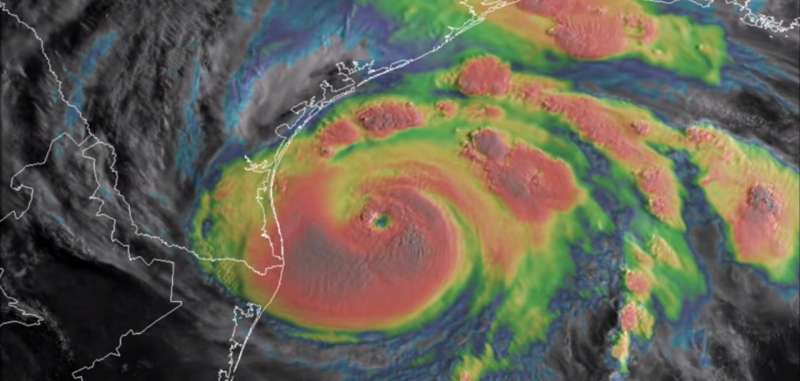NOAA's GOES-16 ready to improve forecasts even more

Now in its new GOES-East position, the advanced GOES-16 satellite has officially joined NOAA's operational observation network, providing forecasters with sharper, more defined images of severe storms, hurricanes, wildfires and other weather hazards in near real-time 24/7.
"The GOES-16 satellite provided invaluable data on deadly hurricanes long before they touched the shore this season," said Secretary of Commerce Wilbur Ross. "As it becomes fully operational, GOES-16 will continue to monitor extreme weather events, safeguarding American lives and property from its perch thousands of miles above the Earth."
Since its launch in November 2016, NOAA's GOES-16, even in its testing stage, showed its potential to improve weather forecasts and brought new levels of situational awareness to forecasters, emergency managers, and the public. The satellite covers most of North America – all of the continental U.S., Mexico and most of Canada, from 22,300 miles above the earth.
"GOES-16 has proven to be one of the most important tools we've ever developed for our weather and hazard forecasts," said retired Navy Rear Adm. Timothy Gallaudet, Ph.D., acting NOAA administrator. "From its impressive first image of Earth last January to monitoring tropical storms and wildfires, GOES-16 has and will continue to greatly improve our ability to visualize potential threats, and enhance forecasts and warnings to save lives and protect property."
GOES observations help save lives
GOES-16 provided critical data which enabled emergency preparations and response during this year's extremely active hurricane season. The new satellite delivered experimental imagery with detail and clarity never achieved before. Its high resolution – four times higher than previous NOAA satellites – and views of Earth taken every 30 seconds allowed forecasters to monitor how and when storms developed. Data from GOES-16 allowed forecasters to better assess and predict how much rain Hurricane Harvey would produce over Texas and see its rapid intensification, along with hurricanes Irma, Jose, and Maria.
GOES-16 data helped monitor and detect wildfires, and gave forecasters detailed images of wildfire smoke, enhancing their air quality forecasts. Imagery from GOES-16 helped forecasters spot new wildfires in California, Kansas, Oklahoma, and Texas, and determine which fires were hottest and where the fires were spreading. This critical information was shared with and used by firefighters and emergency managers.
GOES-16 testing showed potential improvements for aviation weather forecasting and airport operations. Forecasters are now able to predict with greater accuracy than before when fog and clouds will form and clear. The new satellite can also detect turbulence, enabling forecasters to issue timely advisories, aiding in aircraft and passenger safety.
'A game changer'
"We are using the GOES-16 data in ways we planned and in ways we didn't even imagine," said National Weather Service director Louis Uccellini, Ph.D. "GOES-16 has been a game changer for monitoring hurricanes, wildfires, severe storms, and lightning. Now that it is operational and the data is incorporated into the forecast process, we will be able to use it across all our service areas, starting with winter storms."
Data from GOES-16 has been available to NOAA forecasters and the national and international weather modeling and forecasting community during the satellite's testing phase and will continue to do so.
GOES-16 is the first in the series of next-generation geostationary satellites, that provides valuable data in support of NOAA's Weather-Ready Nation initiative. The next new NOAA satellite, GOES-S is scheduled to launch March 1, 2018 followed by GOES-T in 2020 and GOES-U in 2024. These satellites will enable NOAA to more closely monitor weather systems over North America, South America, and the Atlantic and Pacific Oceans, to help protect lives and property.
Provided by NOAA Headquarters




















